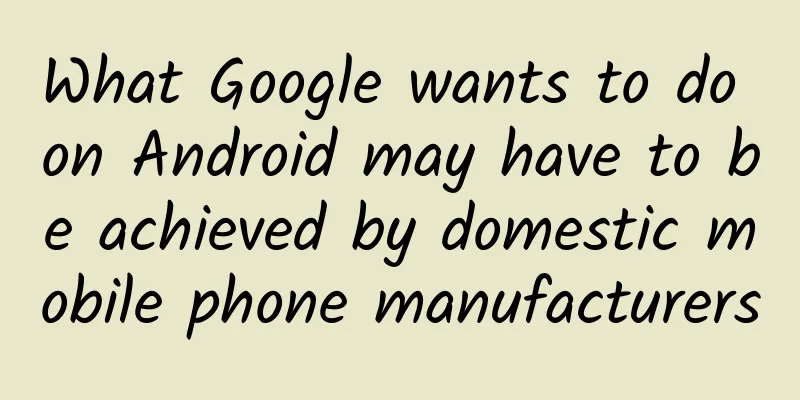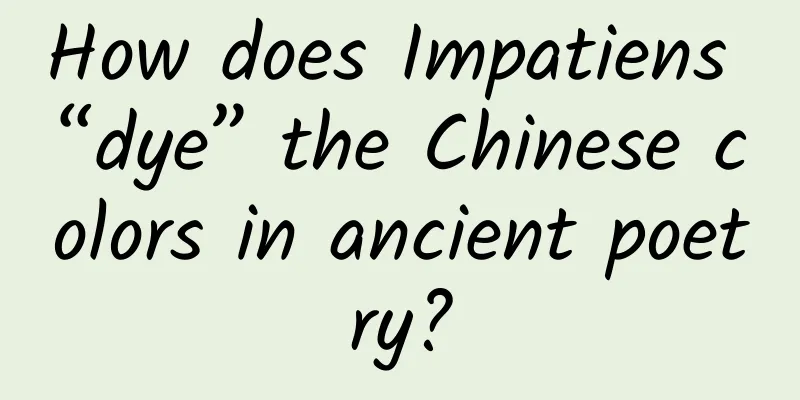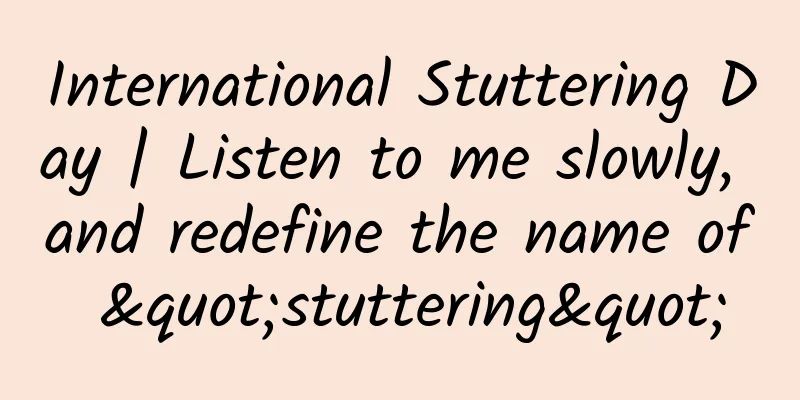What Google wants to do on Android may have to be achieved by domestic mobile phone manufacturers

|
Abstract: In the past two years, domestic mobile phone manufacturers have done a lot together: mutual transfer alliance, unified push alliance, quick application ecosystem... Some time ago, Xiaomi, OPPO, and vivo joined forces to do something. The three manufacturers established the "Transfer Alliance" to break the barriers to data transmission between brands. Users can directly transfer files between the three brands of mobile phones without installing third-party applications. In addition to discussing "why there is no Huawei", more people are applauding. Although the brands belong to the Android camp, they have been independent and in a competitive relationship for a long time. The establishment of the Transfer Alliance this time directly brings convenience to users. Android itself is an open source system, and "openness" is its foundation, but this also brings about the problem of fragmentation. Each system has undergone relatively large customization and modification, and competition between brands makes it difficult to unify standards. In order to improve the overall experience of the Android ecosystem, domestic mobile phone manufacturers have made some efforts. In addition to the Inter-Transfer Alliance, they also jointly established the Unified Push Alliance and the Quick Application Ecosystem. Interestingly, these features are available on the native Android system, but the promotion has not been smooth. What Google wants to do on Android may still have to rely on domestic mobile phone manufacturers to achieve. Cross-device transmission breaks down barriers between brands Thanks to its comprehensive control over software and hardware, Apple has been very smooth in promoting some new features, achieving "freedom" within the ecosystem. Using AirDrop, you can transfer files across devices, with simple steps and fast speed. What the Inter-Transfer Alliance wants to do is a function similar to AirDrop. It is based on the "Mobile Point-to-Point Fast Transfer Protocol" technology. When sharing files, users only need to turn on the mutual transfer function in the drop-down menu. As long as the other party also turns on the mutual transfer function, their user avatar will be displayed on the mobile phone. After clicking send, the recipient can confirm to receive it. The difficulty of this matter is not the technology, but how to get more people to join in. Some manufacturers have already developed their own transmission functions, such as Samsung's S Beam and OPPO's OPPO Transmit, but they are limited to their own brands. The Transmit Alliance has finally broken this barrier. The agreement is also open to all Android manufacturers, and more brands are welcome to join. In fact, Google has also made some efforts to transfer files between Android phones. They launched Android Beam in Android 4.0, a transmission method based on NFC. However, due to the short distance and slow transmission, it has not been widely promoted. Later, Google announced that Fast Share would replace Android Beam. It also uses Bluetooth and Wi-Fi, and can be understood as AirDrop on the Android platform. From Google's perspective, the significance of Fast Share is to make the transfer function built into the Android base so that all Android phones can use it. However, the Xiaomi, Ov and Xiaomi transfer alliances skipped Google to do this. From past experience, native Android is far less active than third-party manufacturers in following up on functions, and the issue of "whether to support long screenshots" was still being discussed this year. The Inter-Transfer Alliance may allow more people to enjoy the cross-brand transmission experience at a faster speed. Standardize the App's message push mechanism to solve the problem of lag In order to solve the problem of Android system freezing, domestic mobile phone manufacturers have also worked together to form a "unified push alliance". This organization is led by China Telecommunication Technology Laboratory under the Ministry of Industry and Information Technology, hoping to standardize the message push mechanism of apps and improve the efficiency of mobile phone use. The Android system has long been criticized for its lag problem, which is largely caused by an unreasonable message push mechanism. In order to promote activity, various apps will continuously push messages to users, which causes them to occupy the background of the phone all the time, causing problems such as lag, heating, and power consumption. In order to better control background programs, Google launched a unified push service GCM (later replaced by FCM), where apps will send message notifications to users through a unified server. Apps with built-in GCM services no longer need to stay in the background as before, freeing up phone memory.
However, Google's services cannot be used normally in mainland China, and domestic App push is still a chaotic scene. The Unified Push Alliance was established in this context. In November 2018, the "Tuibida" technology, which was set by Chinese companies, was open for testing. Participating members included mainstream domestic mobile phone manufacturers such as Huawei, Xiaomi, OPPO, and vivo, as well as many application developers. Interestingly, Google also served as an "observer" in it and expressed strong support for this standard. In the case that Google is unable to enter the domestic market, the Unified Push Notification Alliance is expected to solve the chaos in the domestic Android ecosystem. Ready to use, direct service Mini Programs are one of the hottest concepts in recent years. Led by WeChat, major platforms have established their own mini program ecosystems. It does not require downloading and is ready to use, making it more convenient than apps in terms of user experience. For super apps, this form can expand the limitations of the application itself and provide users with richer functions. After WeChat Mini Program, Alipay and Baidu also launched their own Mini Program platforms. Mobile phone manufacturers also saw the potential of this market and jointly established a quick application ecosystem to provide developers with a unified standard. In the app store, message push, search, browser and other locations, mobile phone manufacturers provide traffic entrances for quick applications, forming a unified service system. In fact, Google also tried light apps very early. They launched Android Instant Apps, which allows users to experience some functions without downloading the app. Its role is to allow users to enjoy application services more smoothly, rather than being influenced by the application ranking mechanism. For some individual developers, this gives them an advantage in the competition with large applications. They can let users experience the functions of the application before downloading without having to develop an app separately.
Google's Instant Apps concept is to revitalize the mobile application ecosystem, allowing users to search and use, and giving developers more ways to reach users. In this respect, it is the same idea as the quick apps of mobile phone manufacturers. Since Instant Apps are based on Google Play, domestic users cannot access them normally. In contrast, domestic mobile phone manufacturers have a larger mass base. Google is aware of the overall problems of the Android ecosystem and wants to solve them. However, in the current environment, even if there are good methods, it is difficult to reach all users. For the open Android ecosystem, "unification" is the biggest problem. Xiaomi, OPPO, vivo, and Huawei occupy a large part of the global mobile phone market. Where Android will go in the future and whether it can compete with iOS may really depend on the efforts of domestic mobile phone manufacturers. |
<<: Google officially pushes the official version of Android 10.0!
>>: Apple may remit funds to Chinese developers at a 1:1 exchange rate between RMB and USD
Recommend
Flying to Jupiter's North Pole and Saturn: Pioneer 11丨Planetary Tour
Pioneer 11 was the first probe to explore Saturn ...
How can bidding projects obtain promotion information through multiple channels? (Part 2)
Continuing from the previous article "How to...
How to promote the brand?
The biggest difference between a brand and a prod...
The former "high-end fruit" has fallen from its pedestal this year. What happened?
Compared with the previous two years, the price o...
If you want to accurately improve your registration conversion rate, you need to know these three factors!
Internet practitioners are certainly familiar wit...
Baidu bidding promotion optimization strategy
As the market and epidemic continue to change, ma...
Dress like this to stay healthy when you travel on holiday! | Tips for healthy travel during the May Day holiday
Source: Healthy China Planning: Tan Jia, Wang Nin...
Frequently asked questions about paid promotion in Huawei AppGallery!
Paid Marketing FAQ 1. FAQ about paid promotion Q1...
5,000 words of in-depth information to reveal the secrets of offline event promotion!
When it comes to organizing events, it is a love-...
How to acquire the first batch of seed users when you have no money, no people, and no fame?
In the early stages of a business , when you are ...
Exclusive analysis of the secrets to increasing the amount of creative advertising material from 0 to 1!
1. The core logic of delivery As an agent, what s...
Behind the Cola Wars: Yuanqi Forest has reached a crossroads
During the May Day holiday this year, I, who had ...
The new Yinxu Museum is open! Why was Yinxu called "Dayi Shang" by the people of the Zhou Dynasty?
The new Yinxu Museum in Anyang, Henan Province, h...
Which three “mobile industry chains” has WeChat created?
[[119993]] Editor's Tips: One of the criteria...
How much does it cost to create a Baidu Encyclopedia entry for your company? Do you believe it’s free?
Whether you are an artist, actor, or industry exp...









